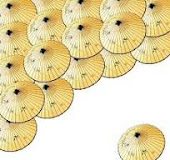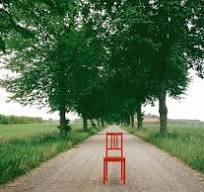"If it is out of your hands,
keep it out of your mind, too."
This morning my FB feed brought these powerful words to me. Best advice ever. Working to discipline one's mind is far from easy, but is possible. How do I know? 'Cuz I've had to do it in order to survive.
For years I read self-help books that introduced me to powerful and fresh paths of thinking. Knowing I had to save myself from situations that were out of my hands, I turned to Barnes & Noble's Psychology section for my therapy sessions. This may sound depressing, but my family was not and is not kind to me, with only two exceptions.
Every story has two sides, I'm aware of that. So many untruths have been told about me in the past years that I don't care anymore. Rather than allow others to tear me apart, I made sure to build myself up, strengthen my inner source however I could/can. We all respond differently to kinds of therapy. Self-help is the idea of treating one's own emotional or psychological problems without the assistance of a therapist. It is said to absolutely be something you can practice on your own to work on anxiety or depression. I know it's possible, 'cuz I've done, and continue to do, it.
When one (myself) endures family alienation, a suicide, a murder, verbal abuse, plus other tragic and traumatic events, one needs something to lean on. For 30 plus years I journaled. Ordinary inexpensive Walmart notebooks that go on sale before school starts in August.....those were my journals.....I called my journaling 'puking on the page.' Sadness needs a place to be dumped, no different than household garbage. If we keep sadness and anger penned up within us, only we eventually buckle under the heavy weight. Another useful tool was keeping a gratitude journal.....where every day I listed things that made me happy, focusing on the positives in my life rather than the negative.
After years of self-help, I finally reached the goal I was looking to attain. Yup, I got to where I one day told the boyfriend, "I'm done. My family will never hurt me again." That's when I put an unbreakable and invisible wall around me. That was the best day of my life. Letting go is not like getting a divorce. Getting a divorce still requires a couple to maintain some form of civility for the childrens' sakes. My kind of letting go is more like cutting a ribbon that can never be re-tied. When I said I was done, I was done.
When one takes such a major step, it's the only way we can no longer allow hurtful thoughts to erode our minds. If those kinds of thoughts accidentally seep into my mind, well, I change gears and immediately start thinking about something positive. That's self-help in a nutshell.
Do I still get upset over stuff? Of course. Do people still drive me crazy? Of course. I just don't give them any space inside my head. I don't believe it when someone says, "I can't help it." Oh, yes, you can. If you truly want to. We have an immense amount of self-protection built into us. The master's degree comes when we achieve the level of strength it takes to be done once and for all.
In my blogs, I often refer to self-help, but don't think I've ever explained myself. Shakespeare said it best, "To thine own self be true." Each of us really only has our self. In the end, we're all we've got. It makes only sense to take care of ourselves as best we can. Other people are our greatest stressors in life due to jealousy, greed and what I call 'nastiness.' If we fall prey to these people, they own us. And, I vowed never to allow that to happen. And, that my friends, is what I mean when I write about self-help. I live by the mantra.......For every minute I am upset, I lose sixty seconds of happiness.
The interesting part of my story is the fact that the people I shut out of my life....they could have cared less. We think people have feelings for us, when, in fact, they don't. We are experts at thinking ourselves to be more important than we actually are in others' lives.
When we moved to Venny, one of the hardest things for me was parting with my self-help library. No way could I bring all my beloved books with me, so I chose only a few of the ones I could not part with. As for my 'big' box of written journals? Well, I packed them up in a copy-paper box, duct taped them shut, and they went to the landfill, where I watched a big machine bury them amidst the garbage. That, too, was a healing act, I got rid of all those emotions once and for all. For the last sixteen years I've written a blog, and that's my therapy. Each year my blogs get published in a hard-cover book and added to my late-life library authored by myself. After I die, there will be no one who will want them and most likely they'll end up with my journals in the landfill. But, you know what? That's okay. I'm used to it. I'm immovable, as I like it.












































